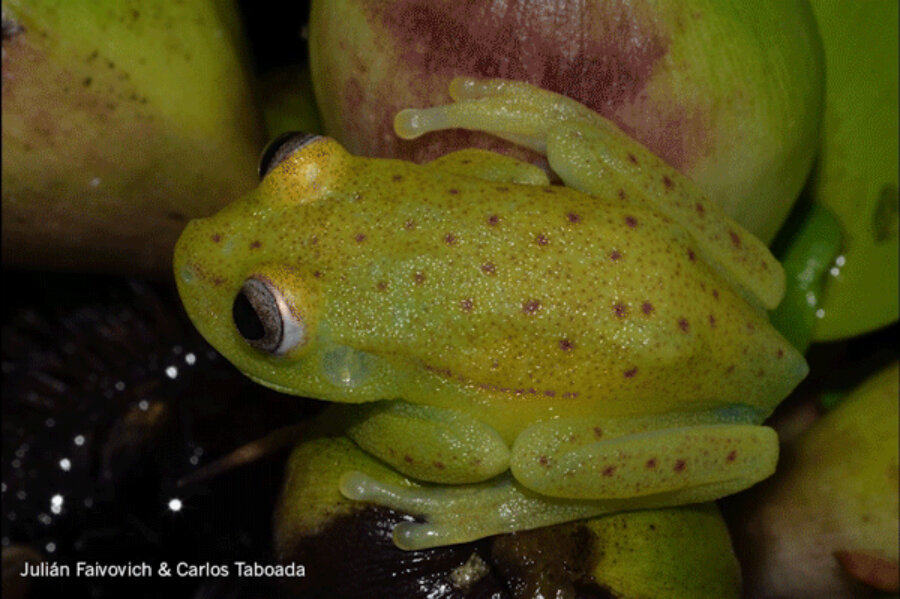How does this polka dot tree frog glow in the dark?
Loading...
At first glance, the South American polka dot tree frog gives off a pale, brownish-green hue. But under a fluorescent light, it glows bright green, with 18 percent of a full moon’s light.
In a study published Monday in Proceedings of the National Academy of Sciences, a team of Argentinian and Brazilian researchers attribute this phenomenon, known as fluorescence, to compounds secreted by the frog’s skin and lymph glands. They see their finding as a major step forward for our understanding of amphibians.
“We were not expecting this bio-fluorescence,” study co-author Norberto Peporine Lopes told Chemistry World. “It was an incredible surprise.”
Unlike bioluminescent animals, like fireflies and anglerfish, which generate their own light, fluorescent animals absorb light and re-emit it at a longer wavelength. Scientists had seen this phenomenon at work in sharks, sea turtles, and other species, but never in amphibians.
When the researchers set out to investigate the polka dot tree frog’s pigment, they thought they might find red fluorescence. The frogs contain a chemical called biliverdin, which has been known to bond to proteins and help some insects fluoresce red.
But the frog, known as Hypsiboas punctatus to scientists, instead glowed green under the researchers’ blacklight. “We couldn’t believe it,” another team member, herpetologist Julián Faivovich, told Nature.
Further investigation found that three molecules – hyloin-L1, hyloin-L2 and hyloin-G1 – were responsible for the phenomenon. Dr. Lopes, a chemist at Brazil’s University of São Paulo, told Nature that these molecules are unique among known fluorescent animals.
What purpose could these molecules serve? Scientists are now gearing up to answer that question. Bibiana Rojas, an ecologist at the University of Jyväskylä in Finland, told Chemistry World that “it would be interesting to investigate if [fluorescence] has a role in species recognition, or whether it facilitates the formation of couples.”
“Fluorescence would be potentially very useful in a noisy environment and in a habitat with dense foliage, as it would make individuals brighter,” she continued.
While the threats facing frogs are well documented, scientists keep identifying new strategies they may have for adapting and thriving in a wide range of environments. Last month, The Christian Science Monitor reported the discovery of several new species of “miniature” frogs, whose tiny bodies may have evolved in response to a limited food supply.
It’s too early to know definitively why South America’s frogs evolved fluorescence, and whether South America’s 250 other translucent-skinned tree frogs also have the trait. But Dr. Faivovich is eager to find out.
“I'm really hoping that other colleagues will be very interested in this phenomenon,” he told Nature, “and they will start carrying a UV flashlight to the field.”








